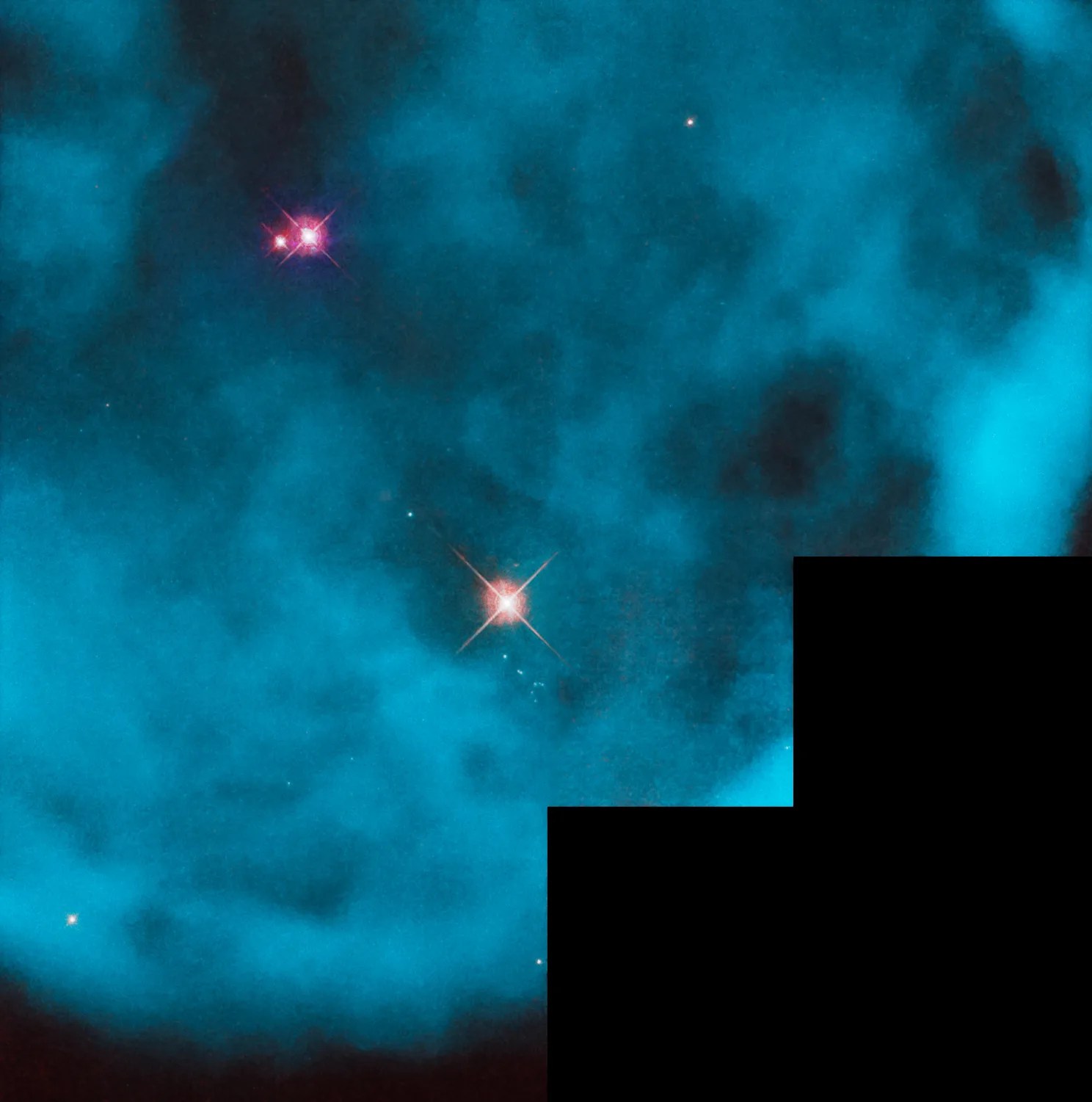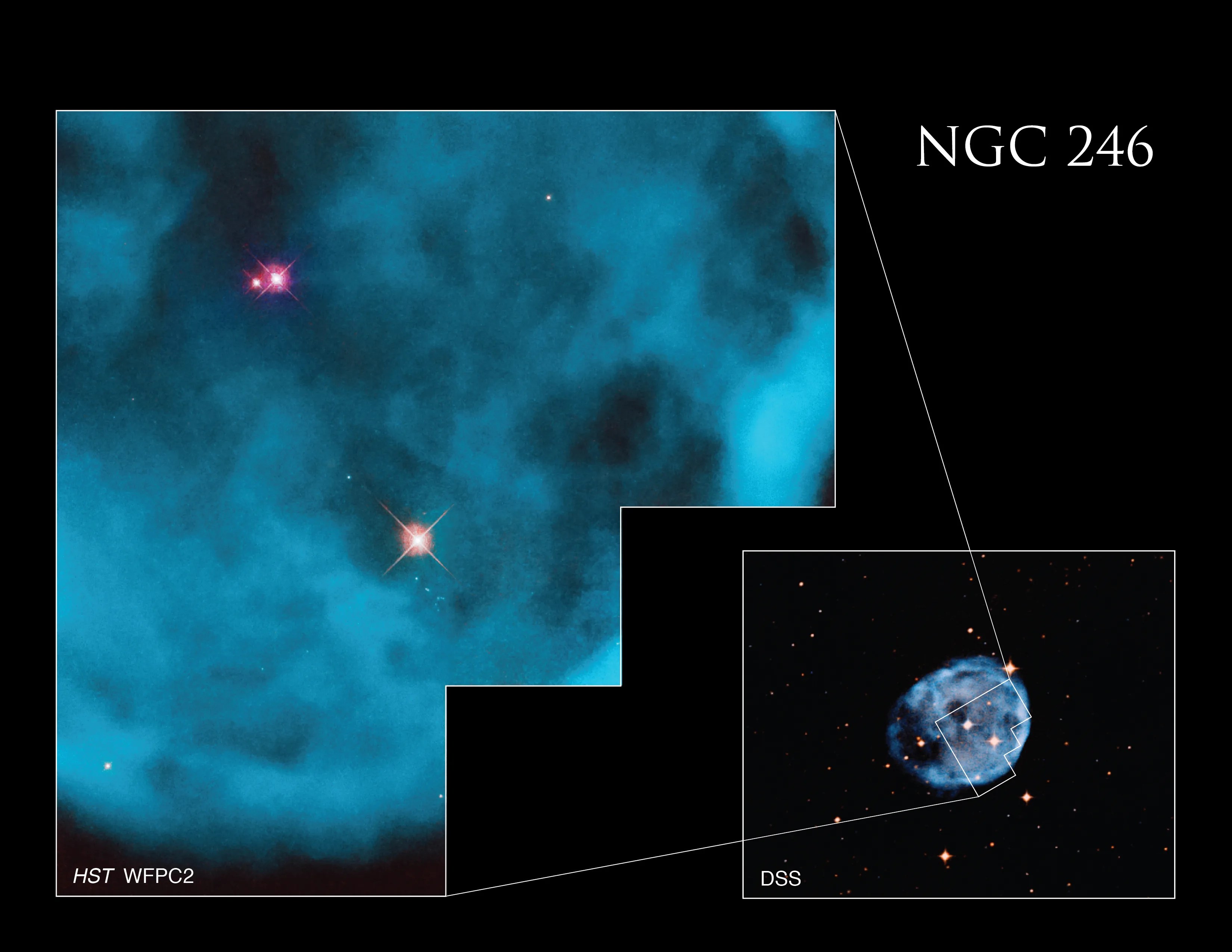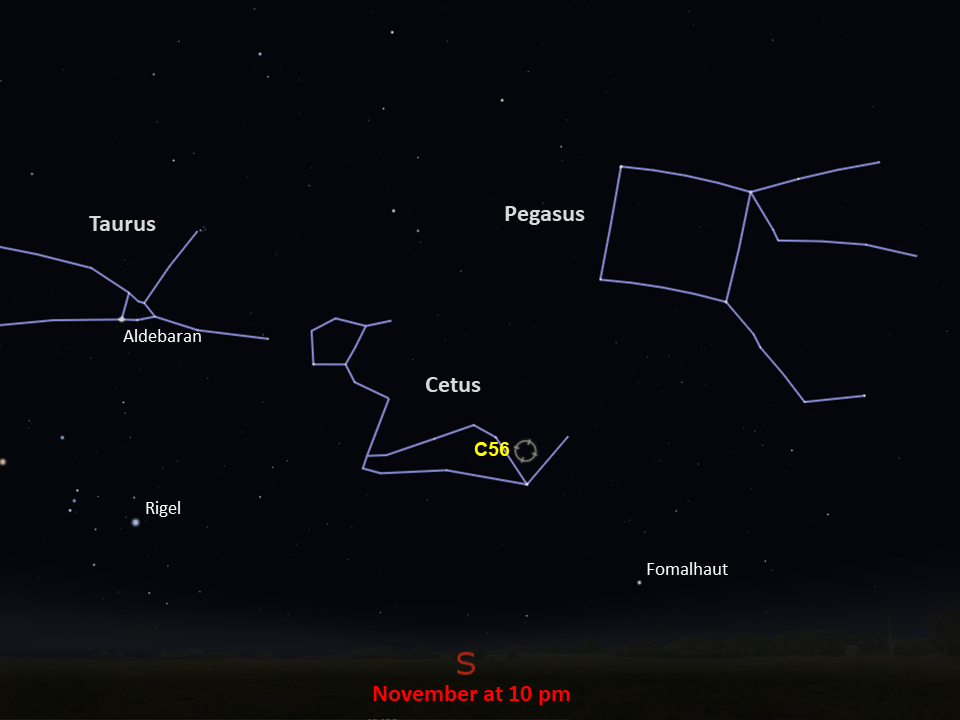Caldwell 56
The best time to observe Caldwell 56 is during the Northern Hemisphere’s autumn and the Southern Hemisphere’s spring.
Distance
1,600 light-years
Apparent Magnitude
8.0
constellation
Cetus
object type
Planetary Nebula

This serene view captures a portion of the planetary nebula NGC 246, also known as Caldwell 56. Planetary nebulae are named such because when they were first observed through early telescopes, they resembled planets. However, a planetary nebula is actually the final stage in the evolution of a star that is similar to our Sun. As the star reaches the end of its life, pulsations and strong stellar winds eject the star’s envelopes of gas. The hot, compact core of the star emits intense radiation, causing the gas to glow for a few tens of thousands of years before the nebula dissolves, leaving behind a white dwarf like the one at the center of Caldwell 56.

The image above was captured by Hubble’s Wide Field and Planetary Camera 2. It provides a detailed look at the structure of Caldwell 56 and its central star. These observations, and subsequent ones, were taken to better understand how the wispy filaments in a planetary nebula change over time.
Caldwell 56 is located approximately 1,600 light-years away in the constellation Cetus. It has an apparent magnitude of 8 and appears as a faint, circular glow through moderately sized telescopes. A few stars appear superimposed on the nebula. The best time to observe Caldwell 56 is during the Northern Hemisphere’s autumn and the Southern Hemisphere’s spring. It was discovered by the English astronomer William Herschel in 1785.

Glossary
Apparent Magnitude - The brightness of an astronomical object as seen from Earth, influenced by the object's distance from Earth, its absolute magnitude, and even gas and dust that lie between the object and Earth.
Planetary Nebula - An expanding shell of gas around an aging or dying Sun-like star, cast off by the star.
Explore Hubble's Caldwell Catalog
The following pages contain some of Hubble’s best images of Caldwell objects.

Caldwell 1
Also known as NGC 188, this group of stars formed from a large cloud of gas making the stars roughly…

Caldwell 2
This shell of gas is expanding outward, away from the dying star within.

Caldwell 3
This barred spiral galaxy was first spotted by British astronomer William Herschel in April 1793 in the constellation Draco.




